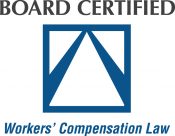In the United States, workplace safety is largely governed by the Occupational Safety and Health Administration (OSHA), a federal agency. OSHA extensively regulates the safety practices of a wide variety of industries, and violation of an OSHA regulation can result in both injured workers and significant civil penalties.
In Fiscal Year 2018 alone, OSHA identified well over 30,000 regulatory violations by US employers — and it is likely that at least as many went undetected. The following list might give you an idea where to start when tracing a link between your injury and your workplace.
- Protection against slip and fall accidents: This violation is by far the most common, and it results in many slip and fall accidents (many of them fatal), particularly on construction sites. Fall protection violations can include insufficient training, defective scaffolding and the improper use of ladders.
- Failure to secure dangerous machinery: Common violations include failure to properly guard points of operation, failure to securely attach guards to machinery and failure to anchor fixed machinery to a stable structure such as a floor. This violation is often discovered in machine shops and in fabricated metal manufacturing facilities.
- Failure to communicate or publicize known workplace hazards. This regulation might be violated by inadequate training or by failure to publish or make available safety manuals or warning signs. Auto repair shops are among the most frequent violators.
- Failure to provide proper respiratory protection. This violation might involve failure to provide or properly fit masks, failure to properly ventilate, and failure to notify workers of known hazards. Painting contractors are among the most frequent violators.
- Industrial truck accidents: Common violations include failure to properly train drivers and operators of industrial vehicles such as forklifts, failure to repair or retire damaged or unsafe vehicles. and failure to properly certify drivers every three years. This violation is particularly common among warehousing and storage facilities.
Effect of Proving an OSHA Violation
Strictly speaking, the North Carolina workers’ compensation system is not fault-based, which means that you don’t have to prove your employer broke a law or was otherwise at fault to win your claim. Establishing a violation of an OSHA regulation, however, can help you prove that an injury or illness was work-related. It can also be used when you are filing a fault-based ordinary personal injury claim against a third party, such as a building owner.
Contact John A. Hedrick Today
If you suspect that you might have a valid workers’ compensation claim, you need to act quickly and decisively to maximize your chances of success. Raleigh workers’ compensation lawyer John A. Hedrick has been certified as a specialist in North Carolina workers’ compensation law since 2003, and he knows the system inside out.
Call us today at 919-626-3895, email us at john@johnhedricklaw.com or simply complete our online contact form for a free claim evaluation.


